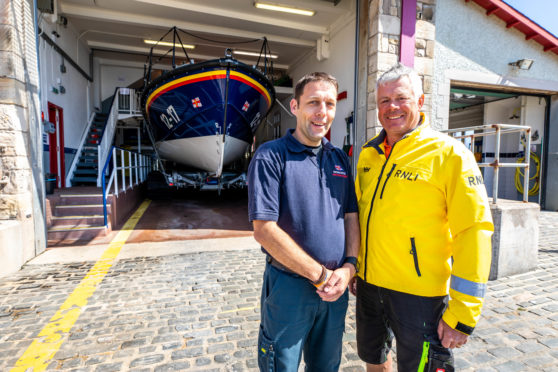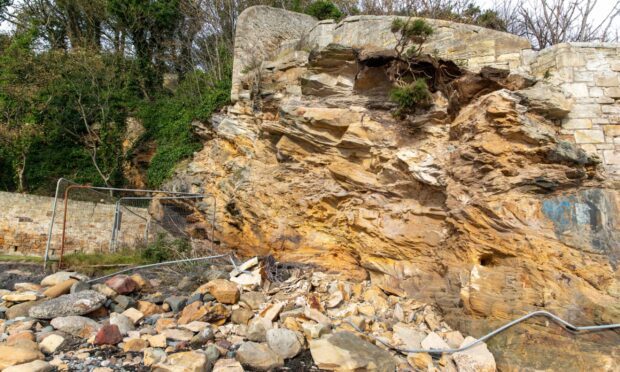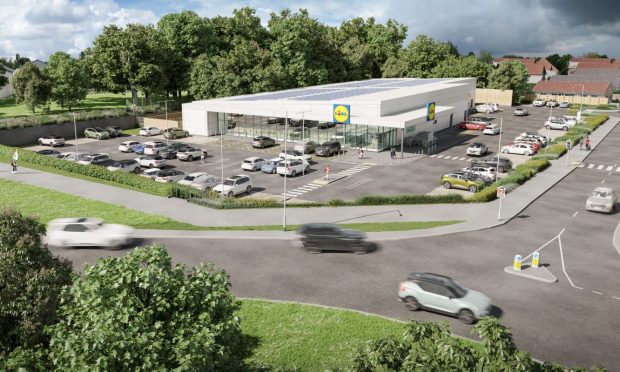A multi-million pound new lifeboat station in Fife will not only save lives but could also provide the region with a bumper tourism boost.
Ambitious plans have been drawn up that will see the RNLI’s base at Anstruther Harbour move to a brand new purpose-built facility just a few hundred yards east along the shore – freeing up the existing building for alternative uses.
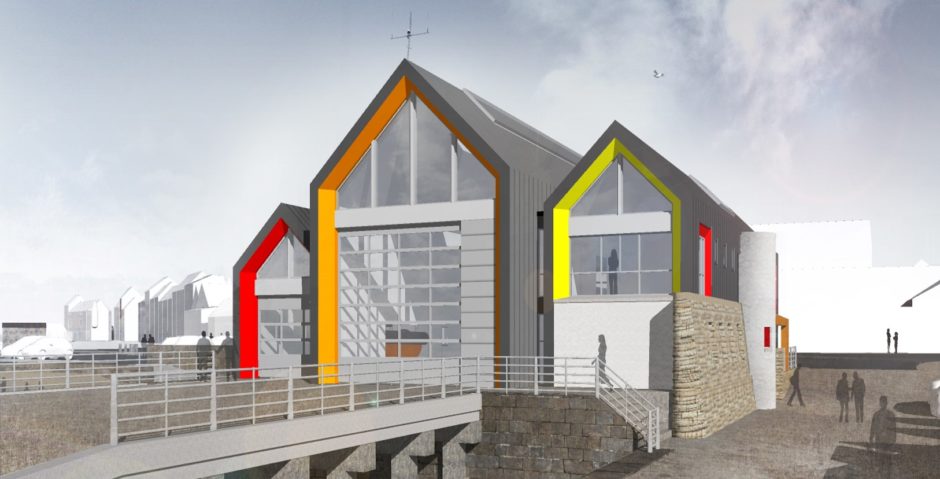
The relocation will also pave the way for the planned upgrade of Anstruther’s all-weather lifeboat to a newer Shannon class vessel, which is the most agile in the RNLI’s fleet and could halve response times.
Other locations along the coast were considered for the new venture, including another site in Anstruther, Cellardyke, Crail, St Monans, Pittenweem and Methil, but the selected site on Anstruther’s East Shore was the only one which met all of the RNLI’s criteria and would ensure no restrictions when launching.
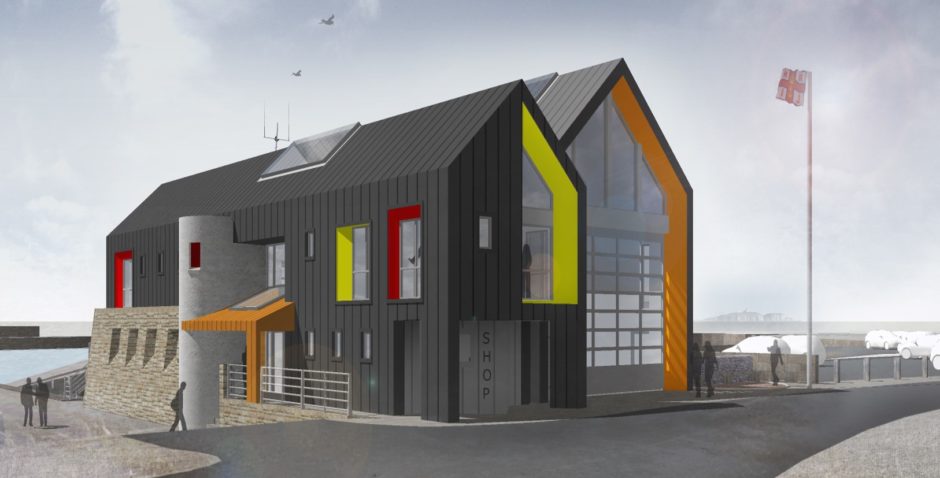
Anstruther operations manager Roy Giles said the design and location were chosen to accommodate the new larger Shannon class lifeboat, following successful trials in the summer of 2016.
“The problem we have with the Shannon here is that it won’t fit in here: the boat is slightly larger but the launch capability is also bigger, so we’ve got to the point where we need a new lifeboat station,” he said.
“Operationally it has great advantages to us because we’ll be operational all the time, we won’t lose lifeboat cover for this part of the Forth and they can build exactly what they want without any restrictions to the footprint here.
“There’s also a lot of affection for the existing building and by siting the new building where it will be sited, the existing building can be brought back into public amenity and there’s already a lot of excitement in the local community about what it could be used for.”
Mr Giles said Pittenweem had been a real contender but was eventually overlooked in favour of the new Anstruther plan.
“Pittenweem was considered quite seriously in that it has more water for longer periods of time, but it is a massively busy fishing harbour and there isn’t any room,” he said.
“If we put a boat in the harbour it would take up two berthing positions which would actually mean eight fishing vessels because they are so busy at the moment they are mooring four abreast.
“Plus the biggest problem is that there isn’t any land at all to build a station there.”
Architects James F Stephen, who were behind Dundee’s iconic V&A, have drawn up plans that will not only provide the facilities needed by the RNLI but will also free up space and allow the reconfiguration of parking areas.
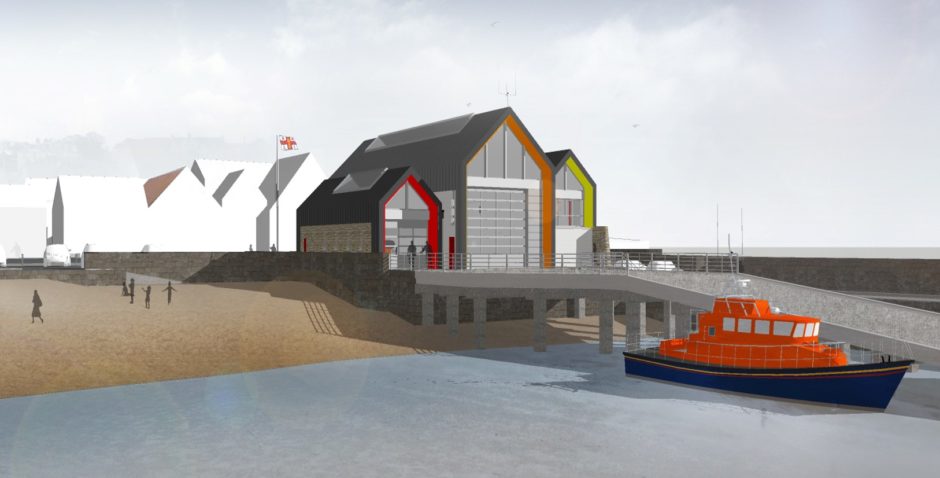
The colour scheme has been chosen to encapsulate the RNLI: the vivid orange of the boats, the red of lifeguard uniforms, the yellow boots worn at sea and the organisation’s blue logo.
Extensive changes would have been required to the existing iconic RNLI building, so the decision was taken to develop on a new site not far along the coast and hand the existing station, parking area and slipway over to Fife Council for an alternative use.
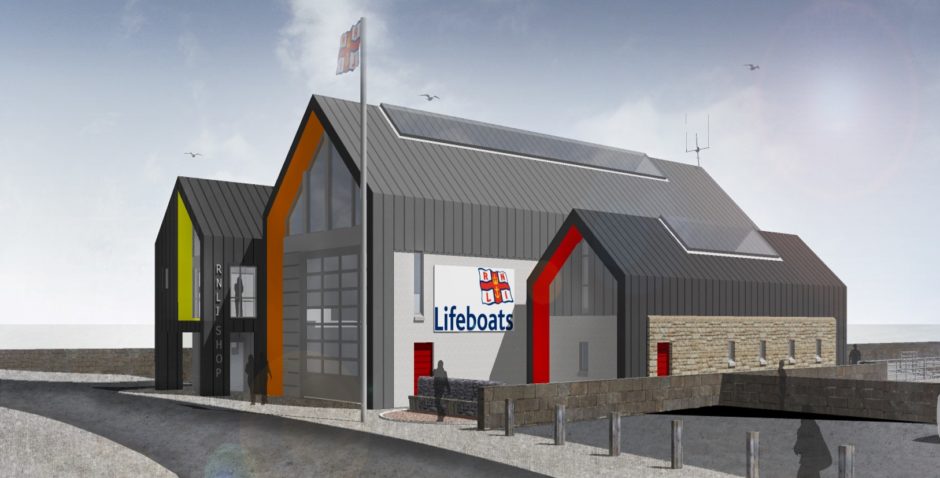
Station coxswain Michael Bruce is excited about the prospect and believes the new station will be far more accessible to the public as well.
“For the RNLI to think Anstruther is worthy of such a huge investment is a huge thumbs up to the community and the work that goes on here,” he said.
No firm price tag has been put on the project as yet, but the new station and lifeboat have been fully costed by the RNLI and the expectation is that the new boat could be in service by September 2021.
The station itself, if planning permission is granted, is likely to take 12 to 14 months to complete.
A new chapter in the RNLI’s story?
If approved, the development will mark the start of an exciting new chapter in the RNLI’s long association with the town.
A lifeboat was first commissioned in Anstruther in 1865 and, since then, seven lifeboats have served the seagoing community.
The station itself was constructed in its current location in 1904.
Today the station hosts the all-weather Mersey class ‘Kingdom of Fife’ and an inshore-operating IB1 class inflatable.
However, after almost 30 years in service, technology has moved on and the ‘Kingdom of Fife’ – which was first launched in 1991 and can do a maximum of just 16 knots – will be replaced by the Shannon class lifeboat which is capable of speeds of 27 knots.
Anstruther is seen as the flagship station providing cover for the entrance to the Firth of Forth and the adjacent North Sea, with lifeboats at Dunbar, North Berwick, South Queensferry and Kinghorn also helping to ensure safety in and around the estuary.
However, the station itself is a hugely popular tourist attraction in its own right, with 20,000 visitors over the door at the RNLI shop alone a year. It vies with Dunbar to be the best visitor attraction and shop in Scotland.
Volunteers also provide tours of the station and facilitate educational visits from schools and colleges.
The crew help to cover what is thought to be the second busiest waterway in the UK, while there are around 15,000 seasonal visitors to the Isle of May and more than 300,000 visitors to the Fife Coastal Path.
